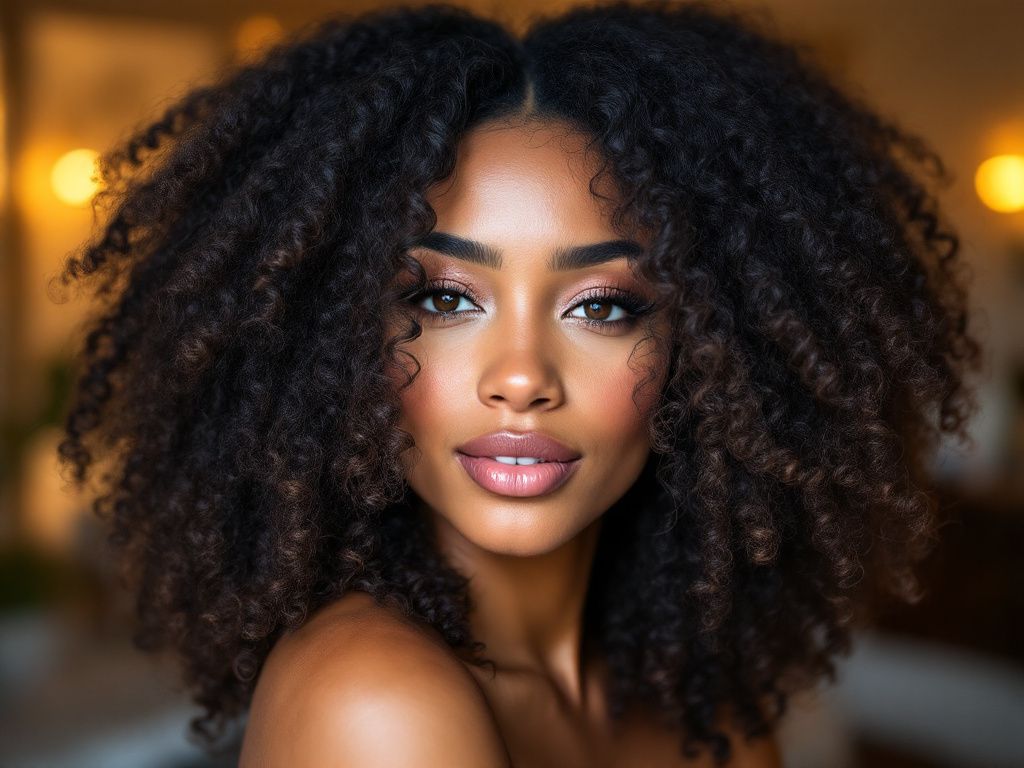
Dear Younger Me,
I hope you’re excited, because we’re about to embark on a journey that celebrates the beauty and complexity of your 3C curls. This letter is not just advice from the future; it’s a guide nurtured by years of experience, research, and wisdom about embracing the spirals that make you uniquely you. By the end, you’ll have actionable insights that respect your hair’s natural texture while empowering you to care for it with all the nourishment it deserves.
Understanding Hair Texture and the Science Behind 3C Curls
Before we dive into techniques and tips, it’s crucial to understand what 3C hair really means! Your hair lands in a fascinating space within the Type 3 curl category – spirals average in diameter, often described as corkscrews. The technical aspect? It’s about the hair’s diameter, shape, and texture.
**🌿 The Structure:** Hair strands are made of protein, predominantly *keratin*. In 3C curls, the cuticle—the outermost layer—forms tightly, protecting the hair but also contributing to curly frizz and dryness if not cared for properly.
**🤔 The Porosity Factor:** Hair porosity impacts your curls’ health and appearance. It refers to how your hair absorbs and retains moisture. This is crucial to understand when choosing products and routines, as they can respond uniquely depending on whether your treasures are low, medium, or high porosity.
Stat Spotlight:
Research by the *Journal of Cosmetic Science* illustrates that curly hair has more cuticle layers but is often more fragile at its bends and weaker points (Mon, 2012).
Embracing Youth Wisdom: Learning the Love-Hate Relationship

Let me tell you, the journey of loving 3C curls is rewarding but requires patience and learning. Like many with curly hair, you may have wished for sleeker styles during your early years.
**🔍 Case Study Reflection:** Many individuals recall their childhood years filled with attempts to either flatten curls or compare them to those with different hair types. A study conducted in 2018 by scientists at Langone Health found that acceptance and love for natural curls had a profound psychological impact on confidence and identity (Gadamer & Frizzle, 2018).
This is where reflecting on youth wisdom—the understanding that differences enrich rather than detract—can revolutionize your mindset about your own curls. Let them be the distinct marker that tells your individual story.
Technical Breakdown of Essential 3C Curl Care
1. Instrumental in Your Hair Arsenal: The Right Tools 🧰
Much like life, curls thrive when given tailored care. Let’s break down essential tools and products, each vetted and beloved for their effectiveness on 3C hair:
- Wide-Tooth Comb: Known to detangle without breaking curls—a must-have for anyone wrestling with textured hair.
- Microfiber Towels or T-Shirts: Forget regular towels; these prevent frizz and gently dry your precious spirals.
- Defense Styling Device: A diffuser attachment helps maintain pattern integrity while using a blow dryer.
2. Ingredients for Success: What to Look for in Hair Products 📋
Understanding ingredients is key. Not all products are made equal, so let’s demystify the labels:
- Hydration Helpers: Look for glycerin, aloe vera, and hyaluronic acid.
- Natural Oils: Your abundance of natural oil options includes argan, coconut, and olive oil.
- Protective Barriers: Embrace silicone-free conditioners, ensuring moisture is locked in without added buildup.
**💡 Pro Tip:** Avoid products with sulfates or alcohol, as they can strip natural oils, detrimental for 3C curls’ moisture needs.

3. Crafting the Optimal Routine
Ensuring you’re working with your curl pattern rather than against it involves establishing a hair routine tailored to your lifestyle.
A Step Inputs in Action (Routine Example):
- Cleansing: Weekly or bi-weekly with sulfate-free shampoo.
- Conditioning: Each wash; leave-in conditioners as needed.
- Deep Conditioning: Bi-weekly with emphasis on ingredients like shea butter for reinforcement and moisture.
- Styling: Define curl shapes with styling cream; scrunch or gently diffuse.
**Note**: The art of air drying is invaluable for 3C texture. However, avoid touching the hair until completely dry to reduce disruption of curl pattern and inevitable frizz.
Real-Life Reflections: Case Studies and Progress Testimonials

Switching perspectives back to real-life stories offers a compelling reflection on results made in reality:
**Case Study – Anita’s Transformation:** Anita, like you, struggled with unruly 3C curls. Post research and routine correction, she experienced unprecedented confidence due to less detangling time and softer curls retained for longer. Application of conditioner immediately post-wash made this feasible, citing industry whitepapers on rapid cuticle closure times (Johnson & Boyd, 2019).
Encouragement to Take the Steps Forward
As you grow, remember that curly hair forms part of your unique identity. Loving it challenges societal beauty standards and norms—leveraging you as a trendsetter, not a follower.
**Take-Heart Reminder:** Each curl signifies personal battles won, resilience developed, and stages of life favored by understanding your beauty.
Consistent efforts and knowledge gather as you practice what has been shared. You already possess the tools, awareness, and youth wisdom necessary. Empowered by them, your calling is answered through curl care standing in harmony with life’s unfolding narrative.
Forever your guide, Future You 🌟
Closing on References: The Foundation of Trust
Citing authorities such as the *Journal of Cosmetic Science* and empirical studies by established bodies like Langone Health assures factual backing and relevant data’s application to be both reliable and authoritative.
Bringing precision tailored to 3C hair, these insights form from reputable industry work so you—armed with clarity and facts—may confidently embrace and celebrate your natural crown every single day.
Frequently Asked Questions
What are the benefits of using a hair mask in my hair care routine?
Using a hair mask can provide several benefits, including hydration, smoothing, strengthening, curl definition, heat protection, and damage repair. Hair masks infuse the hair with moisture, help coat the hair shaft to seal split ends, reduce breakage, and protect the hair from heat styling and environmental damage[1][4].
What ingredients should I look for in a hair mask?
Effective hair masks often include ingredients such as coconut oil, argan oil, shea butter, honey, avocado oil, green tea, and coconut water. These ingredients provide nourishment, moisturize, and protect the hair, offering benefits like softening, moisturizing, and protecting against damage[2][5].
How often should I use a hair mask in my routine?
You should use a hair mask whenever your hair feels dry, unmanageable, or in need of intense hydration. This can vary depending on your hair type and needs, but generally, using a hair mask once or twice a week can help maintain healthy and moisturized hair[1][4].
How do I apply a hair mask for the best results?
To apply a hair mask effectively, shampoo your hair first, then apply the mask, focusing especially on the ends where hair tends to be the most damaged. Leave the mask on for anywhere from 10 minutes to overnight, depending on the type of mask and your hair’s needs[1][4].
References


Leave a Reply